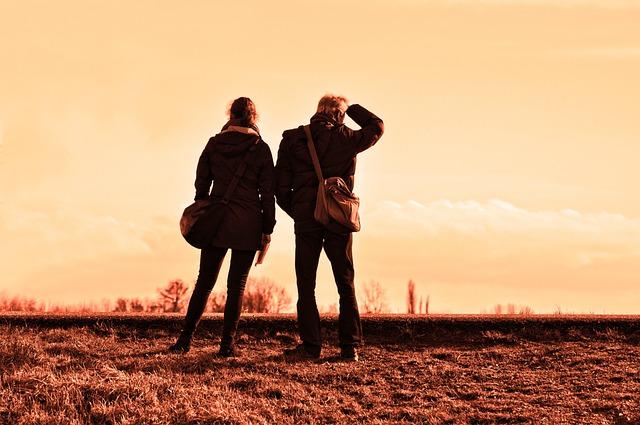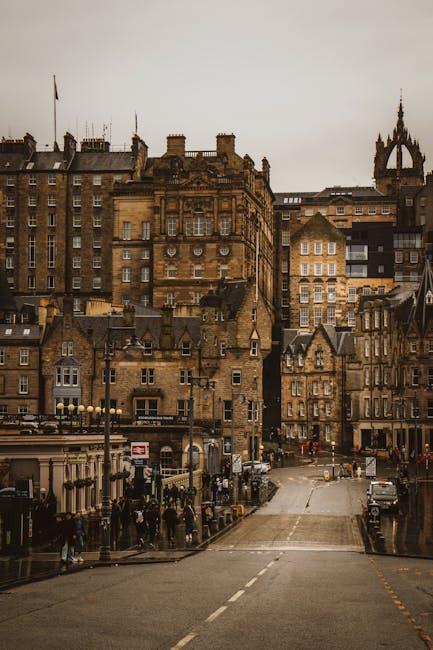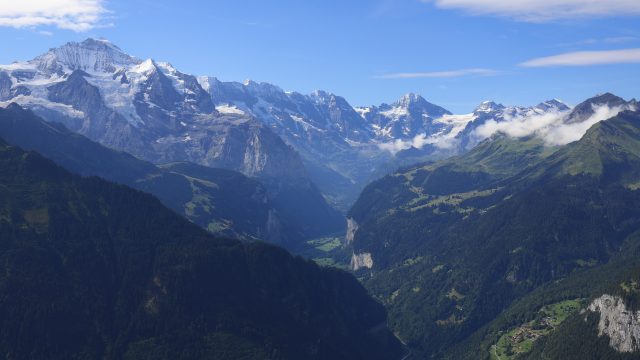In the quiet dawn, before the bustling throngs arrive, Europe’s historic cities whisper stories of bygone eras. Cobblestone streets, aged facades, and timeless landmarks stand as sentinels of a rich cultural heritage, inviting travelers from every corner of the globe to step back in time. Yet, as the sun rises, these charming echoes of history become engulfed by a tidal wave of eager tourists, each seeking their own piece of the past. The phenomenon of over-tourism, a double-edged sword, brings both prosperity and peril to these cherished locales. As we delve into the heart of this pressing issue, we explore whether the ceaseless influx of visitors is eroding the very essence that makes these cities a magnet for wanderlust. Are we witnessing the slow unraveling of Europe’s historic tapestry, or can a balance be struck to preserve its beauty for generations to come?
Crowds and Culture: The Delicate Balance in Europes Iconic Destinations
In recent years, the charm and allure of Europe’s historic cities have attracted travelers from all corners of the globe. Yet, the influx of visitors has posed significant challenges, particularly in maintaining the delicate balance between welcoming tourists and preserving cultural heritage. Many iconic destinations are struggling under the weight of their own popularity, leading to the phenomenon of over-tourism. This issue is not just about crowded streets or long queues at popular attractions; it extends to the very fabric of local communities and their way of life.
- Venice: Known for its romantic canals, Venice faces daily battles against rising tides of tourists, which contribute to both physical erosion and cultural dilution.
- Barcelona: The bustling streets of Barcelona, filled with Gaudí’s masterpieces, are also witnessing a tension between residents and visitors, with locals often feeling displaced.
- Dubrovnik: The ancient walls of Dubrovnik have seen a surge in foot traffic, particularly after gaining fame as a filming location, prompting discussions on limiting cruise ship entries.
Striking a balance involves not only regulating tourist numbers but also fostering an appreciation of the local culture and encouraging responsible travel practices. As these cities grapple with maintaining their cultural integrity, innovative solutions and sustainable tourism practices are becoming increasingly vital.
Preserving Heritage: Strategies for Sustainable Tourism
The charm of Europe’s historic cities, from the cobblestone streets of Prague to the romantic canals of Venice, is undeniable. However, the influx of tourists is putting immense pressure on these urban treasures. To combat this, cities are turning to a range of innovative strategies to ensure that their cultural heritage is preserved while still welcoming visitors. Sustainable tourism is at the forefront of this effort, focusing on balancing the needs of tourists and locals alike.
- Implementing visitor caps: Limiting the number of tourists entering certain areas can help reduce wear and tear on historic sites.
- Promoting off-peak travel: Encouraging travel during less busy seasons can spread the tourist load throughout the year.
- Investing in digital tourism: Virtual tours and augmented reality experiences can offer alternative ways to explore these cities without physical impact.
- Community involvement: Engaging local communities in tourism planning ensures that their needs and perspectives are prioritized.
By adopting these strategies, cities aim to create a more harmonious relationship between tourism and heritage preservation, ensuring that the stories and structures of the past are safeguarded for future generations.

Community Voices: Local Perspectives on Tourism Impact
As travelers flock to Europe’s historic cities, many locals express a blend of admiration and concern over the burgeoning crowds. From the narrow streets of Venice to the charming alleys of Dubrovnik, residents are witnessing a transformation of their beloved cities. While tourism brings economic benefits and cultural exchange, the scale of visitors is prompting some to ask: at what cost?
- Environmental Strain: Increased foot traffic leads to erosion and damage to centuries-old architecture.
- Rising Living Costs: Locals find it challenging to cope with escalating prices driven by tourist demand.
- Cultural Dilution: Traditional lifestyles and customs face the risk of being overshadowed by commercialized experiences.
Amidst these challenges, innovative solutions are emerging. Some cities are implementing visitor caps, promoting off-season travel, and developing sustainable tourism strategies to balance the influx. The voices of the community remain pivotal in navigating these changes, as they strive to protect their heritage while welcoming the world.

Innovative Solutions: Rethinking Visitor Management in Historic Cities
As Europe’s historic cities grapple with the pressures of over-tourism, the need for innovative visitor management solutions has never been more urgent. These cities are cultural treasures, yet the influx of tourists often threatens their very essence. New approaches are essential to protect their cultural heritage while maintaining a thriving tourism industry. Here are some strategies that are making waves:
- Smart Ticketing Systems: By implementing dynamic pricing models, cities can manage visitor flow, encouraging visits during off-peak times to alleviate congestion.
- Digital Footprint Management: Advanced analytics and real-time data can guide tourists away from crowded hotspots to lesser-known attractions, ensuring a more even distribution of visitors.
- Local Partnerships: Collaborations with local businesses can promote authentic experiences, reducing the burden on well-trodden paths and enhancing community engagement.
Embracing these innovative solutions allows historic cities to balance the dual demands of preservation and tourism, ensuring that their unique charm endures for generations to come. While there is no one-size-fits-all answer, a tailored combination of these strategies can offer a sustainable path forward.
Closing Remarks
As the sun sets over Europe’s storied skylines, casting a golden glow on centuries-old architecture, the question lingers: Is the weight of over-tourism too heavy for these historic cities to bear? Like the delicate balance of light and shadow in a masterful painting, the future of these urban gems hinges on finding harmony between welcoming the world and preserving their essence. As travelers, policymakers, and residents alike ponder their roles in this unfolding narrative, one thing remains clear—our collective choices today will shape the legacy of these cities for generations to come. So, as we step back to admire the view, let us tread thoughtfully, ensuring that the echoes of the past continue to resonate vibrantly in the corridors of tomorrow.
































